We’ve shared many blog posts over the past six years about the benefits of inclusive education. Students with disabilities who learn alongside their peers in inclusive classrooms*:
- Have more interactions with and receive more support from peers than students in self-contained classrooms
- Benefit from greater access to the core curriculum
- Achieve comparable or superior academic outcomes when compared with students in self-contained settings
- Have an easier time adjusting to employment and community life
Inclusive education is critical in a child’s early formative years, but it’s no less important in high school, when students are learning important social and academic skills in preparation for college, employment, and community living. Today’s post—excerpted and adapted from Quick-Guides to Inclusion, Second Edition, edited by Giangreco & Doyle—outlines several key things inclusive high school educators should do to meet the needs of every learner, encourage peer interactions, and get students ready for life beyond the classroom.
Make Learning Relevant
When high school classrooms include students of varying interests, talents, experiences, abilities, and motivations, following a traditional, lecture-based approach to teaching just won’t work. (That’s especially true if your high school uses block schedules with 80-minute classes!)
You might try designing units of study around an underlying essential question that requires students to tap into their talents and experience. For example:
- “What is worth fighting for?” is an essential question that might organize a semester’s work in American History, from the Revolutionary War through Reconstruction.
- “If we can, should we?” might be the central question for a biology unit on genetics and heredity.
- “Who owns the land?” could frame a unit of study about the westward expansion of America during the early 1800s.
Posing these questions on the first day of class would engage every student in a lively discussion based mostly on personal opinion and experience. From there, you can go deeper, introducing and elaborating on the content of the unit to help students make connections between the lessons and their own lives. The knowledge and skills you would focus on would be the ones students need to answer the essential question.
Other academic content areas might lend themselves to the use of problem-based learning instead. You might engage students in studying and solving real-life problems such as, “Develop a school policy about fair and reasonable accommodations for the participation of students with disabilities in interscholastic sports,” “Fill out an IRS 1040 form,” or “Design a business plan for a student-run school store.” In cases like these, the skills you would teach would be the ones students need in order to solve the problem, moving beyond basic acquisition of knowledge to practical application and synthesis.
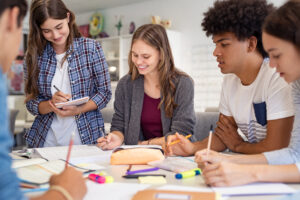
Make Learning Cooperative
Students tend to learn the most from teachers who encourage them to work together on homework, labs, or projects, to provide feedback on one another’s efforts and work on solving problems together. Classrooms like these are a hotbed of activity and conversation, and you can feel the excitement when students are encouraged to bounce ideas off one another. When all students learn together, each student learns more.
Instead of tracking and ability grouping in your inclusive high school classroom, use cooperative group activities to ensure that your instruction responds to the diverse learning needs of all your students. In well-designed cooperative group activities, each student has a specific role and several tasks to accomplish for the group. For example, in a science class, your students might work together to design a solar collecting panel that would power a boom box. In a social studies class, groups of students may adopt a country and develop a strategy for improving its citizens’ literacy or health. Each group would need researchers, speechwriters, chart makers, speakers, and liaisons to other countries. Effective grouping meets individual student needs, because the activities you plan will value and build on differences in what students know and how they approach problems.
Peer supports, another form of cooperative learning, can also be used in high school classes to ensure that students with disabilities participate in meaningful ways in the curriculum. For example, a classmate may take notes for a student who has difficulty writing, or help redirect a student with attention difficulties.
Address Social Justice Issues in Your Classroom
Preparation for college and the world of work are important goals of a high school education—but it’s also essential to prepare students to be responsible and contributing citizens who fight injustice whenever they see it. To facilitate your students’ commitment to this cause, you can address social justice issues through the curriculum and through your personal actions. Rather than stopping the flow of a course to have “disability awareness week,” look for natural opportunities to discuss these issues. For example:
- While reading Of Mice and Men, the class might discuss the need for everyone to have friends and advocates.
- In a child development course, you might teach facts about a range of disabilities and explore the shifting societal attitudes toward children born with disabilities.
- In a sociology or building trades class, students might explore the merits of requiring universal accessibility in the design and building of public facilities.
- In physical education, students might discuss issues concerning the participation of students with disabilities in competitive sports.
To extend the commitment to social justice beyond the curriculum, establish norms for how students and teachers treat one another. Banning the use of hate speech and teaching students to mediate disagreements are part of the “hidden” yet essential curriculum in inclusive schools. Some of the most successful inclusive schools are those in which students themselves become advocates for issues such as hunger relief, peace, and antiracist education. Teachers in inclusive high schools show students that striving for social justice is in their best interest, because there comes a time in everyone’s life when we need others to stand up alongside us and for us.
Become a Reflective Practitioner
Teachers who engage in ongoing reflection about their practices often find it easier to avoid burnout, maintain their enthusiasm, work through tough problems, and keep learning more about what works well. Reflection means more than just the end-of-the-day thinking that you do on the drive home from school—it also means making changes to your teaching that improve student learning. Because many minds are better than one, you might consider starting or becoming a member of a small group of teachers who meet regularly in “reflective practice groups.”

Finding time together can be difficult, but many high schools are restructuring their schedules to give teachers a common planning period during the school day to do this important work. In these groups, you can:
- ask colleagues to help you brainstorm ideas for inclusive teaching while you’re planning a unit
- plan to work in pairs to observe one another’s classrooms, asking, “Is each and every student an active participant in both academic and social life here?”
- reflect on critical incidents that arise during your day-to-day teaching
- learn how to ask yourself and others deep and relevant questions (“What are the assumptions behind your thinking about John’s refusal to do the work?”)
- explore your beliefs about teaching and assumptions about motivation, independence, and learning differences
- examine student work as an indicator of how effectively instruction and supports were designed and implemented
- discuss key overarching questions such as, “How can we narrow the gap between the achievement of students with and without disabilities?”
Advocate for Untracking and Inclusion
![]()
As a busy teacher balancing many responsibilities, you may not think you have the time—or the need—to become involved in larger debates about inclusive education. But you may wonder how schools might benefit if more teachers were willing to include students with disabilities, or if administrators provided more professional development about teaching students with disabilities. You see the benefits of having an inclusive class, but you may wonder why, in many schools and classrooms, there are still separate special education classes, “low” and “high” level tracks, and alternative high schools.
All around the country, more and more teachers are becoming involved in efforts to “untrack” schools and include all students. Consider taking steps to sharpen your advocacy skills. Speak out publicly about the benefits of inclusion and untracking, and challenge outdated philosophies. Write letters to state representatives, compose opinion pieces for newspapers and blogs, and advocate for quality professional development and teacher collaboration. Start or join a professional learning team and brainstorm ways to improve inclusion, both in your school and in other schools.
For example: teachers from one high school were all members of professional learning teams that worked together for a year to investigate and understand a variety of current educational issues and dilemmas. One team focused on the inclusion of students with significant disabilities. They read seminal and current research, used reflective practice protocols to solve problems related to instruction, and eventually made recommendations for changes in the school’s course registration policies that improved access to rigorous academic courses by students with disabilities.
(See this blog post for suggestions on how to become a more skilled advocate for students.)
Encourage Self-Advocacy

Helping students develop the skills they need to advocate for themselves is an important job for any inclusive high school teacher. Transition planning meetings provide a great opportunity to encourage self-advocacy and self-determination—be sure to involve students in a range of activities before, during, and after these meetings.
- Before meetings, you can help students prepare their responses to questions that are likely to be asked. Some students may become involved in identifying and sending out invitations to potential team members.
- During meetings, ask your student to be the first person to respond to questions that are posed, encourage the student to share previously prepared notes, and invite them to assume responsibility for carrying out specific responsibilities on the IEP and transition plan. You can also foster self-advocacy by creating a comfortable and relaxed atmosphere and encouraging the student to invite friends to meetings.
- After the meeting, have check-ins with your student. Talk about ways they can take on increasing levels of responsibility during meetings, including co-facilitation.
Outside of transition planning meetings, you can promote self-advocacy and self-determination by providing your students with plenty of opportunities to make choices about possible courses of study, extracurricular activities, and recreational activities. Encourage your students to express their needs in appropriate ways, and provide modeling when necessary. Many students will also benefit from instruction in specific self-advocacy skills, such as self-assessment, goal setting, problem solving, communicating, and resolving conflicts. (Always keep in mind that self-advocacy means different things to different people and should be considered within the context of a student’s age, culture, and support needs.)
Identify Post–High School and Community Resources
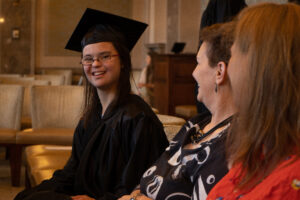 High school students and their families will benefit from resources and supports that help them achieve their transition goals and become increasingly independent and connected to their community. Help them locate training, supports, and relevant information related to goals such as:
High school students and their families will benefit from resources and supports that help them achieve their transition goals and become increasingly independent and connected to their community. Help them locate training, supports, and relevant information related to goals such as:
- finding and maintaining employment
- exploring postsecondary education options, financial aid, and admissions requirements
- getting a driver’s license
- managing finances
- living independently
- participating in community recreational activities
You might do this by contacting the student’s guidance counselor to obtain relevant information, making a list of websites with reliable guidance, and encouraging family members to attend resource fairs at your high school or local parent information center.
If you’re a high school teacher, what’s the most important thing you do in the classroom to teach and include every student? Add your thoughts in the comments below—and for more practical inclusion guidance, check out the book that inspired today’s blog post!

Quick-Guides to Inclusion Ideas for Educating Students with Disabilities, Second Edition
Edited by Michael F. Giangreco, Ph.D., & Mary Beth Doyle, Ph.D.
A must for busy teachers who need practical guidance on including students with disabilities in general ed classrooms, this sourcebook gives K-12 educators ideas, examples, and tips on a wide array of inclusion topics, such as literacy, partnerships with parents, positive behavior support, and curriculum adaptations.
*Inclusion facts adapted from the book Equity and Full Participation for Individuals with Severe Disabilities, edited by Martin Agran, Fredda Brown, Carolyn Hughes, Carol Quirk, & Diane Ryndak
Stay up to date on the latest posts, news, strategies, and more!
Sign up for one of our FREE newslettersMore posts like this
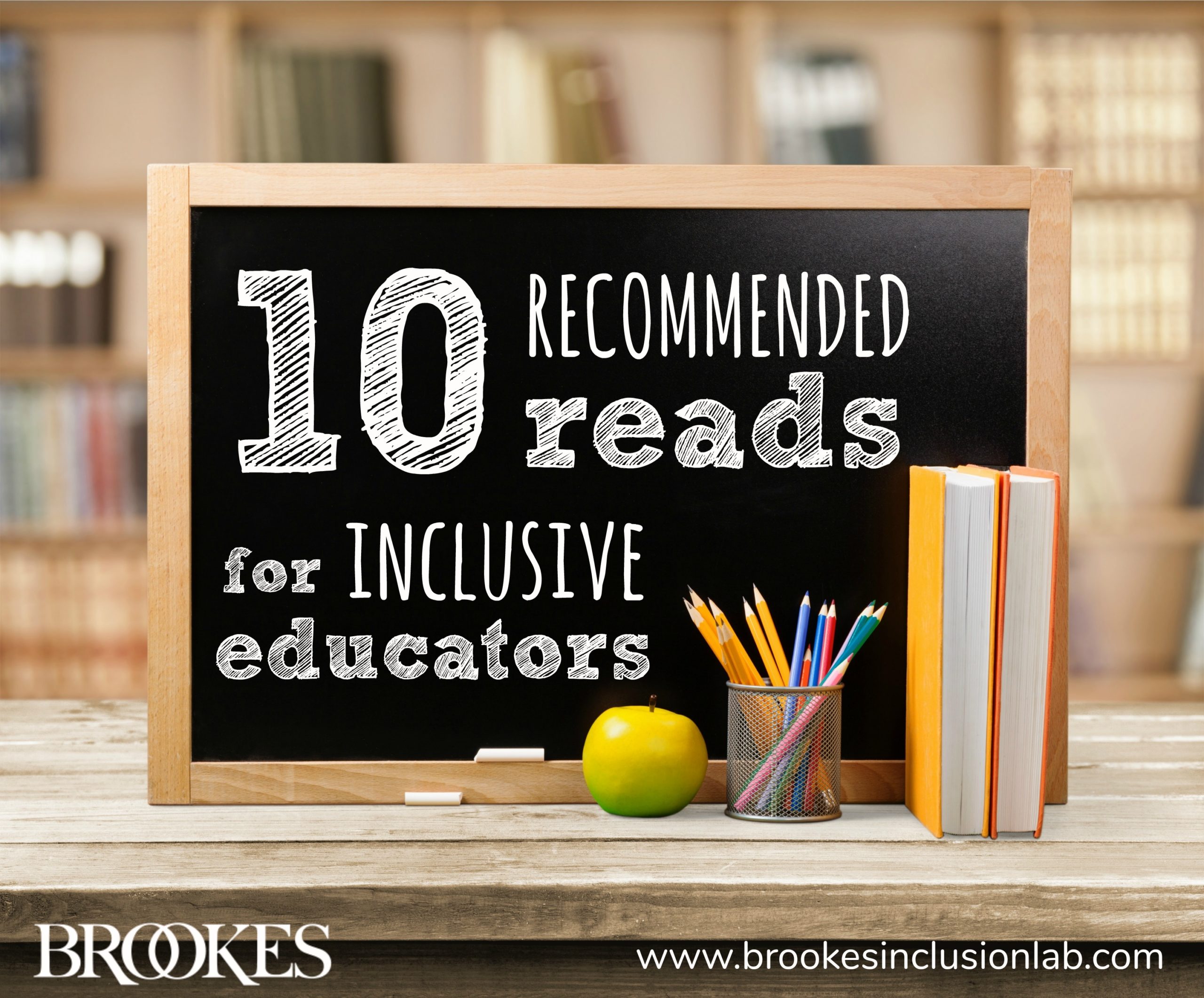
Recommended Reads: 10 Books to Help You Build Your Inclusion Toolbox
May 5, 2020
“Start with Strengths”: An Inclusion Q&A with Author Julie Causton
August 21, 2018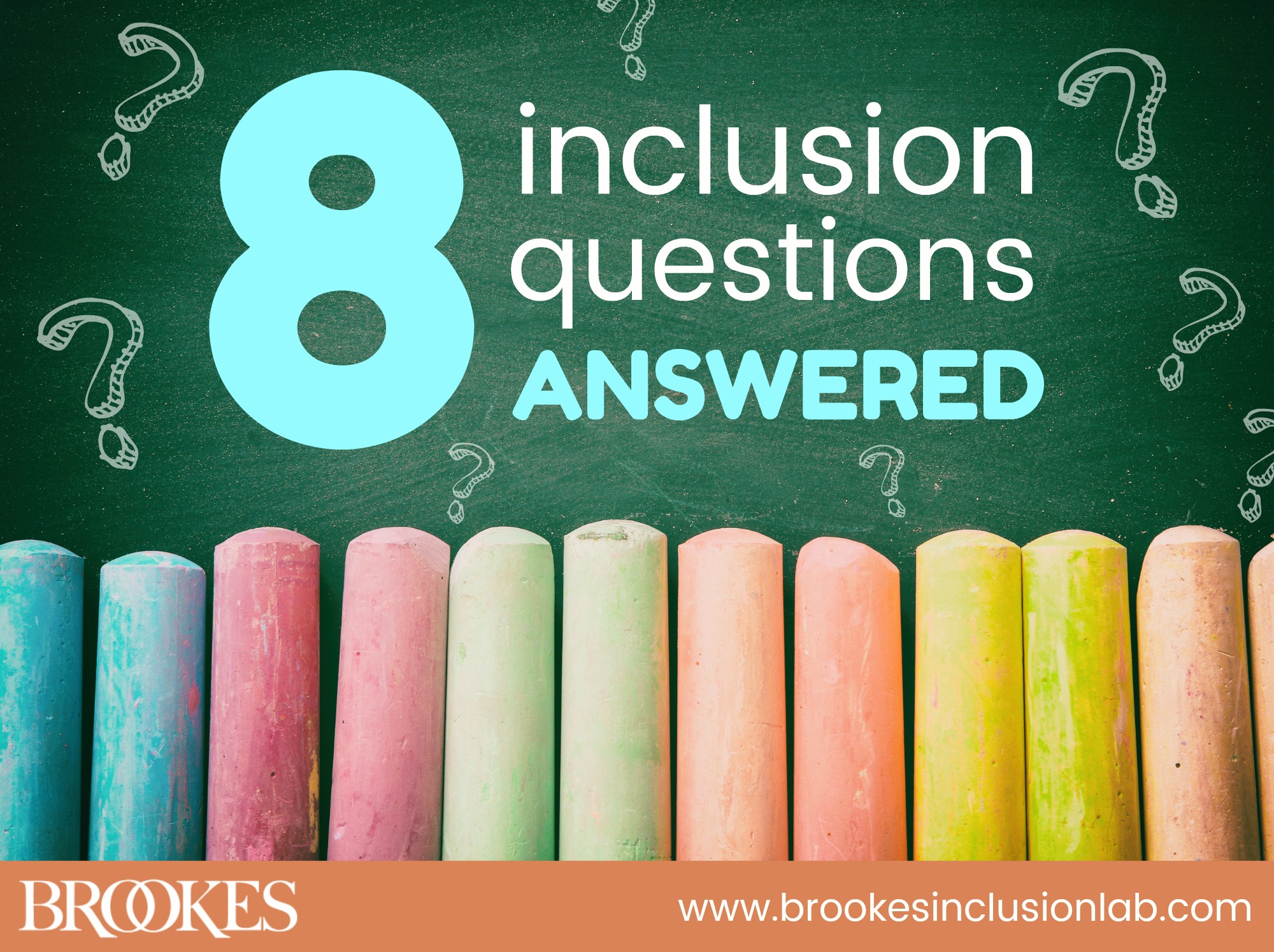

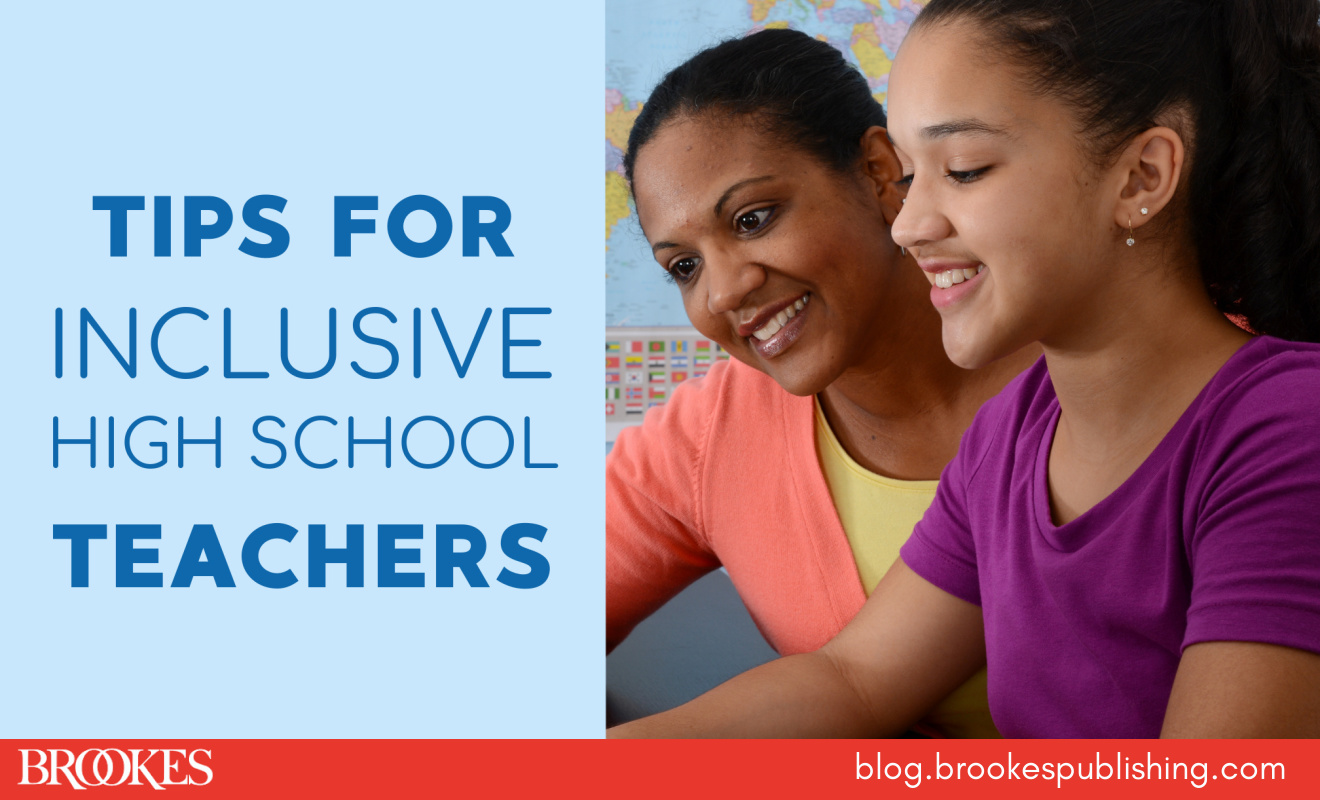
Write a Comment
Your email address will not be published. Required fields are marked *
Post a Comment